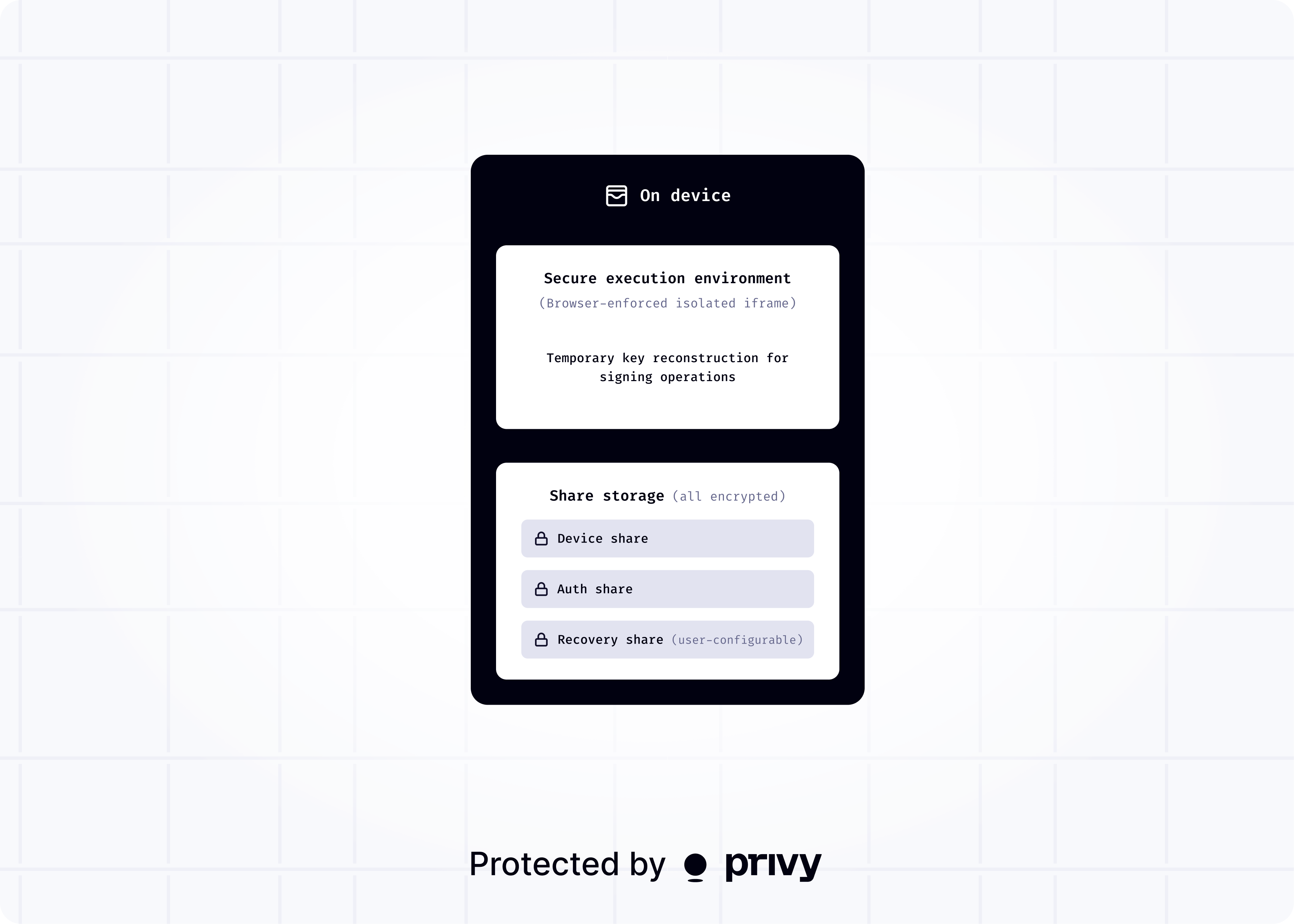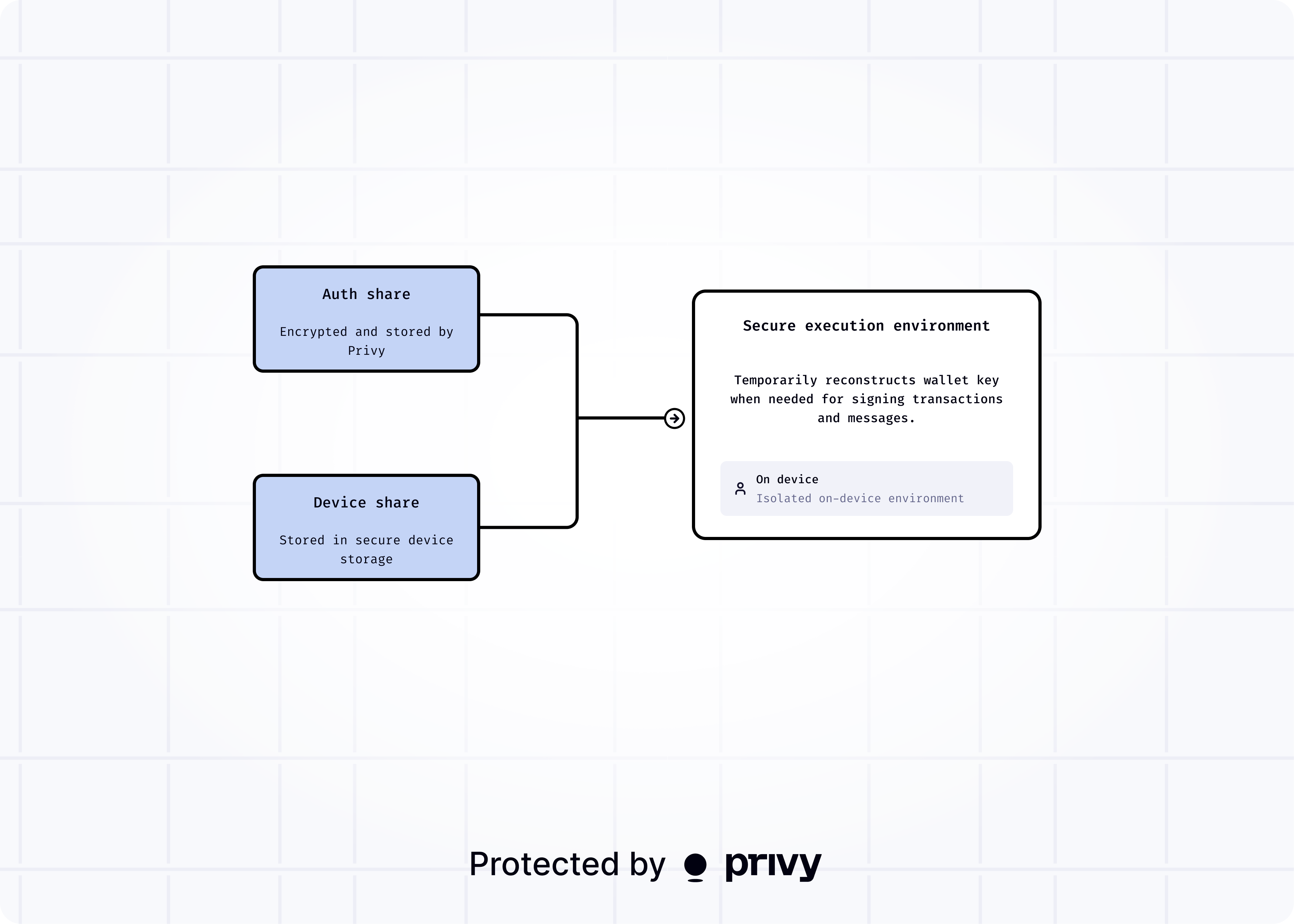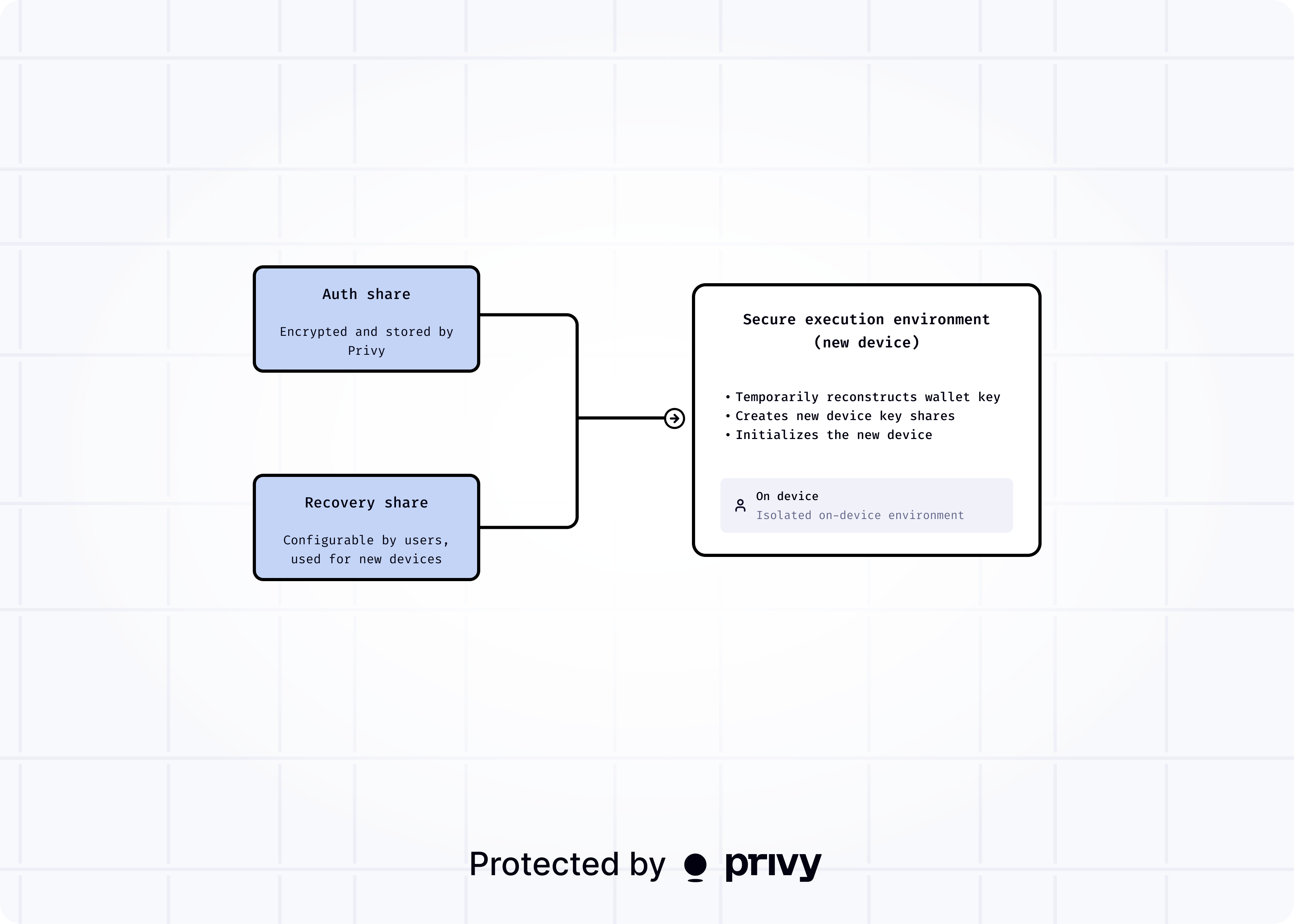- On-device execution enables the fastest-possible signing speed (5 ms), but involves a more limited feature set.
- If you have on-device execution enabled, you will see “On-device” as the Wallet environment in your app’s Wallet > Advanced settings page. Otherwise, your app uses TEE execution.
- You can migrate from on-device to TEE execution. Apps may only operate in one environment.
Browser-isolated execution environments on user devices
With on-device execution, Privy secures wallets directly on user devices using browser-enforced isolation via iframes. This relies on the same browser security boundaries that have been battle-tested for decades, securing billions of dollars in daily financial transactions across the modern internet. The Privy iframe runs in a separate process with its own isolated memory space, completely separated from your application. This isolation is enforced by:- Hardware-level memory protection
- Browser process separation
- Strict origin and frame ancestor validation
- Content Security Policy controls that strictly lock down network access
Browser security boundaries have been battle-tested for decades, securing billions of dollars in
daily financial transactions across the modern internet.
Key shares
Privy’s security model is based on distributed key sharding. This means critical key entropy is split into encrypted shares, protected by separate security boundaries. With on-device execution, there are three share types:- Device share, which is persisted on the user’s device. In a browser environment, this is stored in the browser’s domain-partitioned local storage via the iframe.
- Auth share, which is encrypted and stored by Privy. This share is accessible only with valid user authentication.
- Recovery share is used to provision the wallet on new user devices. This share is encrypted and secured either through user-managed methods (password or cloud backup) or Privy’s recovery key management system.

Securing the recovery share
Privy offers two approaches to securing the recovery share: Automatic recovery Privy’s key management system secures the encrypted recovery share, allowing users to provision their wallet on new devices through normal authentication. Privy infrastructure ensures only the user can decrypt their recovery share on their device. User-managed recovery With user-managed recovery, the recovery share is encrypted via a recovery factor managed by the user. This takes two forms:- Passwords: users can set a strong memorable password to secure the recovery share for their wallet. Privy has no knowledge of the user’s password and cannot decrypt the recovery share.
- Cloud-backup: the recovery share is secured by a recovery decryption key that is backed up to the user’s cloud storage account (e.g. Google Drive or iCloud). Privy cannot access this backup and cannot decrypt the recovery share.
Key management operations
Creating a wallet
When a user creates a wallet, the secure execution environment generates strong entropy (128 bits) from a cryptographically secure random number generator (CSPRNG). This is converted to a mnemonic using BIP-39, from which Privy derives the wallet’s public key and private key. All Privy wallets are hierarchical deterministic (HD) wallets. Immediately after creation, the wallet entropy is sharded into key shares, and the key shares are encrypted and distributed across separate security boundaries. This ensures that wallets can never be accessed outside of the secure execution environment.Signing a transaction
Two shares must be present to reconstruct the private key. During regular operation, Privy reassembles the wallet using a device share and auth share. A device-specific share and an auth share are provisioned for each device on which a wallet is used. In other words, when signing a transaction:- Your application passes the transaction data through the Privy SDK
- The secure iframe validates authentication and retrieves necessary encrypted shares
- Key reconstruction occurs only in the iframe’s isolated memory
- The key is used temporarily in-memory for cryptographic signing
- Only the signature is returned to your application

Provision new devices
Users provision their wallet on a new device using the recovery share and auth share. This set of recovery shares is created on initialization of a new wallet. When a user accesses your app on a new device, the iframe will retrieve the auth share for your user during the login process. Then, depending on how you’ve configured recovery, the iframe will decrypt the recovery share for your user by:- requesting the recovery decryption key using the user’s auth token, if using automatic recovery
- having the user decrypt the key using their recovery factor (password or cloud account), if using user-managed recovery

External key recovery
With Privy’s architecture, a user is able to recover their private key even if they lose their device or if they lose access to your app.- If the user loses access to their device and is unable to retrieve their device share, they can combine their auth share and decrypt their recovery share to reconstitute the full private key.
- If the user loses access to your app and is unable to retrieve their auth share, Privy enables an external recovery service so that users are always able to export their wallet.

